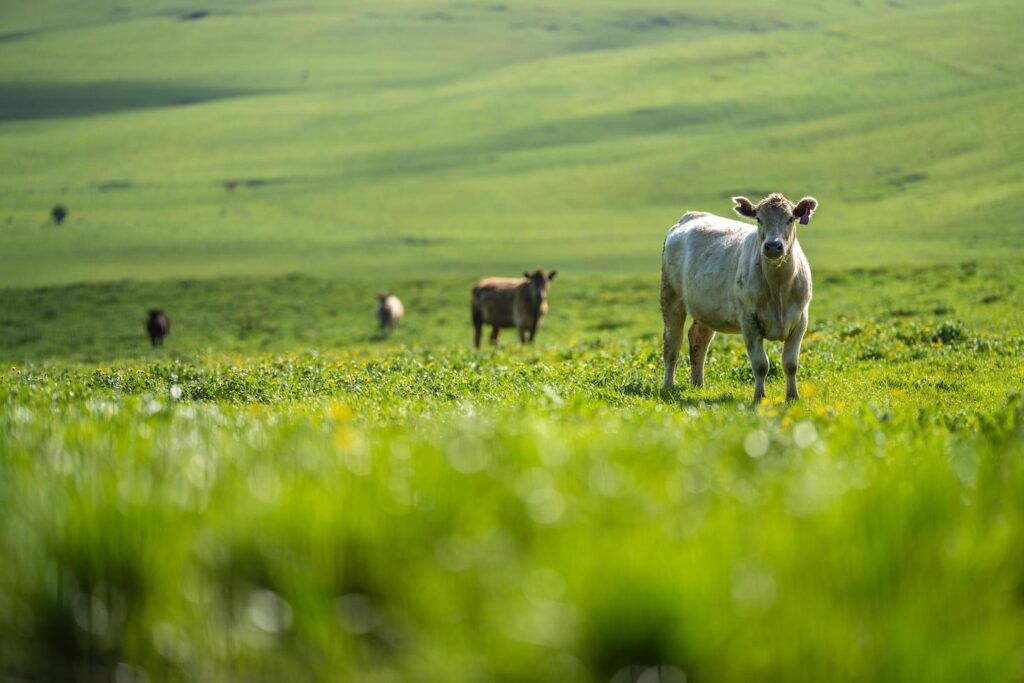Read in
Regenerative agriculture has slowly but surely taken over the sustainability programs of America’s food corporations. PepsiCo, ADM, Cargill and General Mills are among the big companies encouraging their suppliers to adopt regenerative practices. Those practices are also supported by the U.S. government’s $3.1 billion Partnerships for Climate-Smart Commodities program.
This development has important benefits: Planting cover crops, reducing tillage and rotating crops, among other regenerative practices, offer a range of environmental advantages and can make farms more profitable. In the best case, they can even sequester carbon in soils. So, there’s nothing wrong with regenerative agriculture itself.
But the narrow focus has been crowding out work on more systemic food systems issues, such as food waste, dietary change and crop diversity, that need addressing. How did we get here, and how can we correct the course?
What’s behind its popularity?
Regenerative agriculture has been the right-sized sustainability pill for U.S. policymakers and companies to swallow. It’s big enough to elicit the appearance of meaningful change but small enough not to make too many people uncomfortable.
Three factors underlie its nearly universal support:
1. Minimal business disruption
Changing the practices of thousands of farmers isn’t simple, but it’s more convenient than revamping entire business models. Replacing conventional corn with regeneratively grown corn is easier than working with a different ingredient with superior environmental characteristics. Regenerative agriculture allows companies to demonstrate a commitment to sustainability while keeping their supply chains, products and profits intact.
2. Broad political support
While regenerative agriculture isn’t entirely uncontroversial — especially among farmers themselves — it’s far less polarizing than advocating for meat reduction or redistributing subsidies from commodity producers to vegetable farms. Politicians and businesses can demonstrate that they have finally woken up to agriculture’s climate impacts but don’t have to step on anyone’s toes to do something about it.
3. Attractive marketing opportunities
Regenerative agriculture allows its proponents to tell heartwarming stories that feed into America’s romanticized farming narrative. Companies and politicians can lift up farmers as climate heroes. Images of thriving cover crops and grazing cattle underscore hard work on the land for the benefit of all. That’s more attractive than showcasing a cultivated meat facility or campaigning for smaller portions to reduce wasted food.
Expanding the toolbox
The best path forward is not a choice between regenerative agriculture and other sustainability approaches — because solving our climate, biodiversity and economic crises requires multiple approaches.
Let’s instead use the success of regenerative agriculture as an example for building momentum for additional improvements. With regenerative agriculture’s established support and rising global awareness of required food system reform, now is a good time for sustainability teams to recalibrate and onboard more tools.
Impactful options include:
- Regional and diversified sourcing strategies: The global food system has become overly dependent on a dozen dominant crop varieties often produced in sub-optimal climates, making food production susceptible to more frequently occurring extreme weather events. Reestablishing regionally adapted crops will increase resiliency and offer consumers more nutritional variety.
- Strategic plant-based replacements: We now have a solid body of knowledge about encouraging people to eat more plants and less animal products for their well-being and our planet’s health. Many approaches, from product innovation to behavioral science tools and new culinary techniques, have been tried and tested. Companies often feel that consumers don’t want to change their diets, but it’s in their hands to create an appetite for this shift.
- Updated anti-deforestation approaches: Work on stopping deforestation and other land conversion has moved into the background as the regenerative agriculture hype has taken over. But they are two different problems that need to be addressed simultaneously. It’s time to revisit commitments and programs.
- Circular solutions: We still waste about a third of food along the entire value chain and create significant pollution through food packaging. The pre-COVID momentum for reusable packaging has yet to resurge, and new technologies and lessons for waste reduction are waiting to be deployed.
Leveraging the COP28 tailwind
COP28 kicks off in Dubai with an unprecedented food focus.
The host country of the climate summit, the United Arab Emirates, has positioned food systems transformation as a prominent topic on the agenda with a dedicated food and agriculture day Dec. 10. The COP28 presidency has also issued a Declaration on Sustainable Agriculture, Resilient Food Systems, and Climate Action, which it asks governments from around the world to sign.
In addition, the Alliance of Champions for Food Systems Transformation is working to align governments behind ten priority actions necessary to limit global warming to 1.5 degrees Celsius and achieve the Sustainable Development Goals. They include food loss and waste reduction, greenhouse gas emissions reduction and nature protection and restoration.
Rather than working on regenerative agriculture in isolation, U.S. companies and policymakers should support these holistic, global efforts toward a sustainable and equitable food future.



